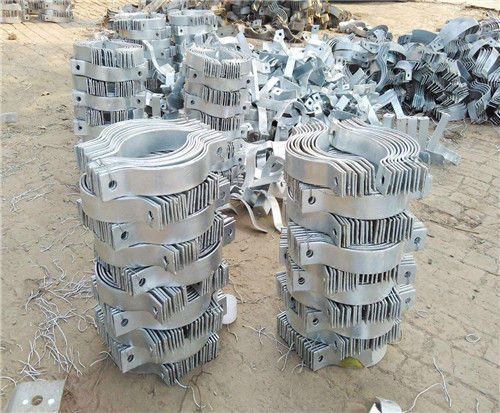What is the difference between quenching and heat treatment and the heat treatment of the stud manufacturers?
The heat treatment process generally includes three processes of heating, heat preservation and cooling, and sometimes only two processes of heating and cooling. These processes are connected to each other and cannot be interrupted.
Heating is one of the important processes of heat treatment. There are many heating methods for metal heat treatment. The first use of charcoal and coal as a heat source, and the application of liquid and gaseous fuels. Electrical applications make heating easy to control and environmentally friendly. These heat sources can be used for direct heating, or by indirect heating of molten salts or metals, or floating particles.
When the stud metal is heated, the workpiece is exposed to the air, and oxidation and decarburization (ie, the carbon content on the surface of the steel part) often occur, which has a detrimental effect on the surface properties of the parts after the heat treatment. Thus the metal should normally be heated in a controlled atmosphere or protective atmosphere, in molten salt and in a vacuum, or protected by coating or packaging methods.
Heating temperature is one of the important process parameters of the heat treatment process. The selection and control of the heating temperature by the stud manufacturers is the main problem to ensure the quality of the heat treatment.
The heating temperature varies depending on the metal material to be treated and the purpose of the heat treatment, but is generally heated above the phase transition temperature to obtain a high temperature structure. In addition, the transformation takes a certain time, so when the surface of the metal workpiece reaches the required heating temperature, it must be kept at this temperature for a certain period of time, so that the internal and external temperatures are uniform, and the microstructure is completely transformed. This period of time is called the holding time. When high-energy density heating and surface heat treatment are used, the heating rate is extremely fast, and generally there is no holding time, and the heat treatment time of the chemical heat treatment tends to be long.

Cooling is also an indispensable step in the heat treatment process. The cooling method varies from process to process, mainly to control the cooling rate. Generally, the annealing rate is the slowest, the normalizing cooling rate is faster, and the quenching cooling rate is faster. However, there are different requirements depending on the type of steel. For example, an empty hard steel can be hardened by a normalizing cooling rate.
Stud quenching and tempering treatment is quenching + high temperature tempering = double heat treatment of quenching and high temperature tempering, the purpose of which is to make the workpiece have good comprehensive mechanical properties.
Heat treatment refers to a metal thermal processing process in which the material is heated, held, and cooled in the solid state to obtain the desired structure and properties.
Quenching and tempering treatment: The heat treatment method of high temperature tempering after quenching is called quenching and tempering treatment. High temperature tempering refers to tempering between 500-650 °C. The quenching and tempering of the stud manufacturers can greatly adjust the properties and materials of the steel, and its strength, plasticity and toughness are good, and it has good comprehensive mechanical properties. After quenching and tempering treatment, tempered sorbite is obtained.
Tempered sorbite is formed when martensite is tempered and can be distinguished by magnifying 600 times or more under an optical microscope microscope. It is a carbide (including cementite) distributed in the ferrite matrix. The composite structure of the pellets. It is also a tempering structure of martensite, a mixture of ferrite and granular carbide. At this time, the ferrite has substantially no carbon supersaturation, and the carbide is also a stable carbide. At room temperature is a balanced organization.
With the increase in the application of electric power fittings, the development of electric power fittings will be more rapid, and because of the wide application of electric power fittings, its quality problems will be one of the * issues we attach importance to. Therefore, we should consider some high-level problems in the process when we use it. Fan-shaped aluminum wire, power cable and over-connection of the copper end of electrical equipment, such products also play a vital role in the power fittings.